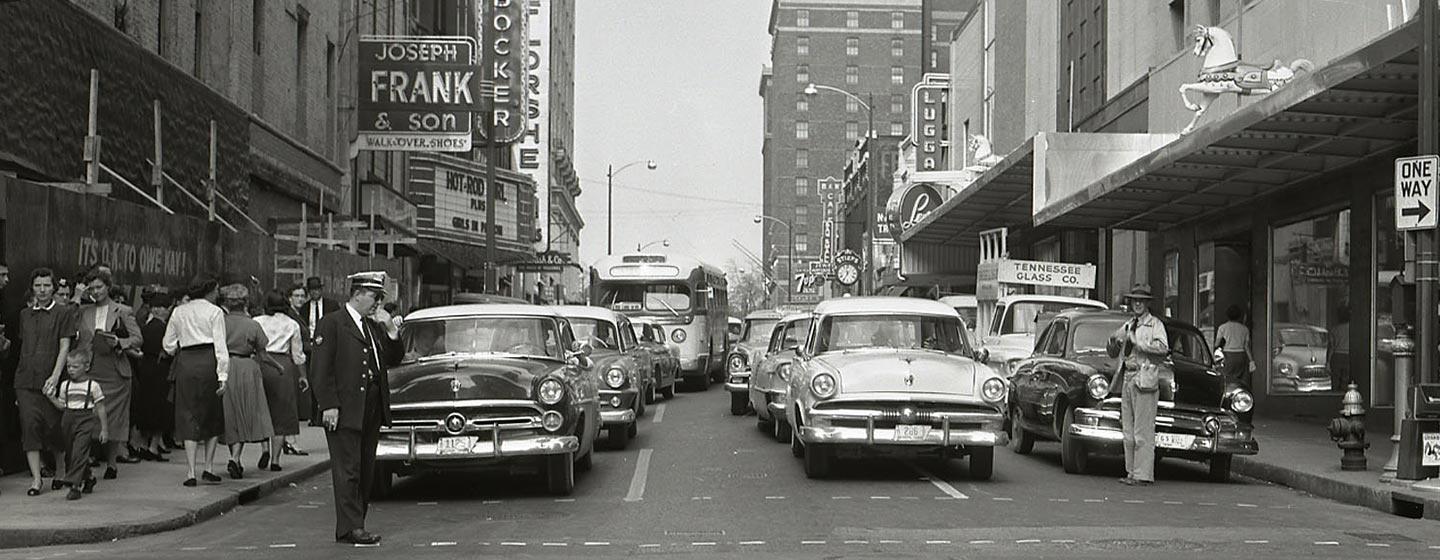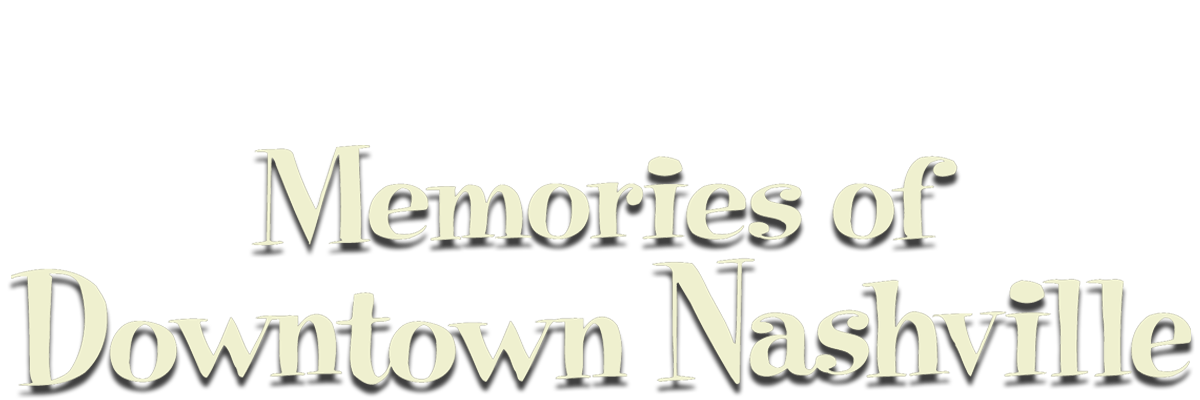
Showcase
Memories of Downtown Nashville
From Church Street to Union Station, from the river to the capitol, revisit the glorious past of downtown Nashville. Through rare home movies and photographs, Memories of Downtown Nashville takes viewers on a virtual trip, revealing the places and the happenings that defined downtown over the last 50–plus years.
Business and Government
Nashville was a prosperous river city when it became the permanent capitol of Tennessee in 1843. By the time the state capitol building was officially completed in 1859, Nashville was an established center for government and business. With a thriving printing industry and a newly built railroad station, the downtown area welcomed an influx of new businesses in the early 1900s. Following World War I, Nashville's business community became more diversified and service-oriented, and by mid-century, banking and insurance were primary industries. Company such as Life & Casualty Insurance Company and National Life and Accident Insurance Company had a major presence in the downtown area. In fact, the thirty-one story L&C Tower was the tallest commercial building in the Southeast when it was erected in the late 1950s. Although the L&C Tower is now surrounded by taller buildings, its significance to downtown Nashville has not diminished.
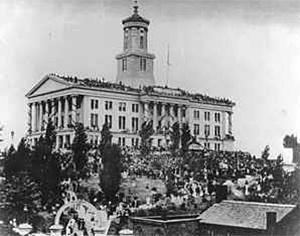
1880
State Capitol
Centennial Celebration

1935
State Capitol
View from the south
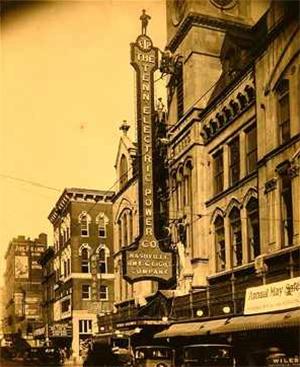
1926
The Electric Power Company
Church Street
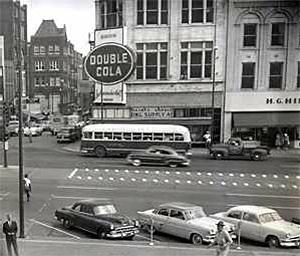
1950's
Public Square
South sidw, across from courthouse
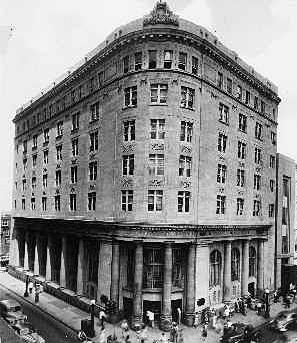
1940's
American National Bank Building
Fourth and Union Street

1950's
Downtown Intersection
Broadway and Eighth
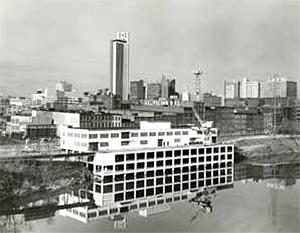
Circa 1957
Downtown and Cumberland River
View from the East
Hotels
Downtown hotels were once at the center of Nashville's social and political life. The Maxwell House, which stood on the corner of Fourth Avenue and Church Street, and the Hermitage Hotel, located on Sixth Avenue, were frequent stops for the Who's Who in American history. The Hermitage Hotel was the gathering place for both the pro- and anti-suffrage teams when the Tennessee State Legislature ratified the Nineteenth Amendment in 1920. The Maxwell House had the distinction of hosting seven Presidents, including Theodore Roosevelt in 1907. Roosevelt's comment that the coffee at the hotel was “good to the last drop” became an advertising slogan that's remembered to this day. Unfortunately, the Maxwell House was destroyed by a fire on Christmas night in 1961, and many other downtown hotels, including the Andrew Jackson and the Noel Hotel, are no longer a part of the Nashville skyline. The Hermitage, however, has survived and recently received a multi-million dollar renovation.
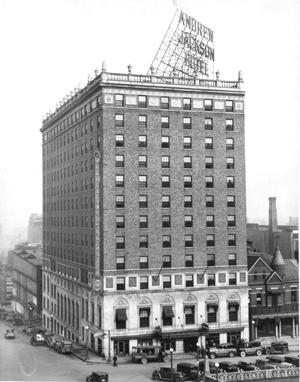
1920's
Andrew Jackson Hotel
East Side of Capitol Square, Corner of Deadrick
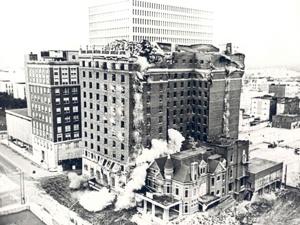
June 30, 1971
Andrew Jackson Hotel
During Demolition
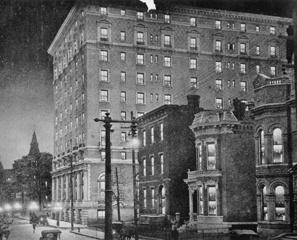
1913
Hermitage Hotel
At Sixth Avenue
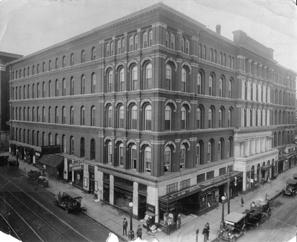
1925
Maxwell House
Fourth and Church
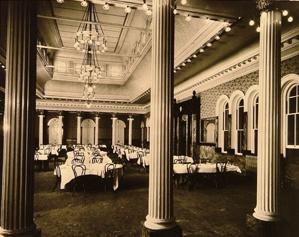
1950's
Maxwell House
Dining Room
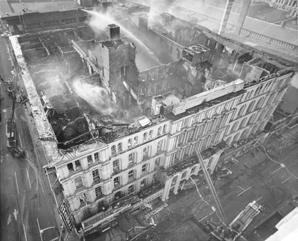
1961
Maxwell House
Fire
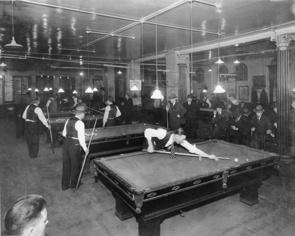
1950's
Maxwell House
Pool Room
Restaurants and Entertainment
In addition to shopping excursions, downtown Nashville was a popular destination for food and entertainment. Kids and adults alike enjoyed trips to Candyland, apple pies at Harvey's, and burgers at the Krystal on Church Street. For more elegant fare, there was the Cross Keys Restaurant on Sixth Avenue, the Irish Room at Cain-Sloan, and the Grille Room at the Hermitage Hotel, among others. The grand movie theaters on Church Street, such as the Tennessee and the Paramount, with their posh lobbies, large screens, and first-run films, made for a fashionable evening. For more adult entertainment, there was Broadway or Printer's Alley, the latter being named after the publishing shops that once populated the street.
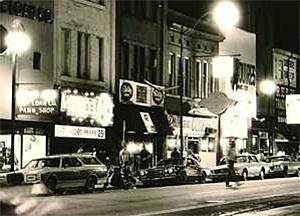
1980's
Broadway
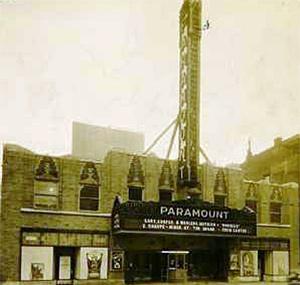
1930
Paramount Theater Opening

1970's
Printer's Alley
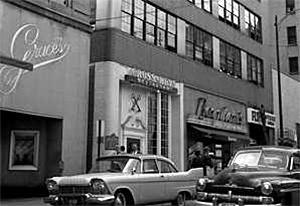
1954
Sixth Avenue
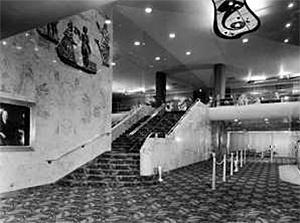
1952
Tennessee Theater Lobby
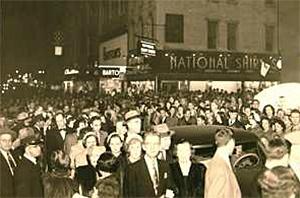
1952
Tennessee Theater Opening
Shopping
Shoppers once flocked to downtown the way they now flock to suburban malls. The three main department stores, Harvey's, Cain-Sloan and Castner-Knott, were located on Church Street. Harvey's, with its famous Monkey Bar, as well as its carousel horses and escalator, was a favorite of kids. Cain-Sloan was known for its more upscale merchandise and Castner-Knott maintained its downtown presence until 1996.
The weekend crowds also congregated on Fifth and Sixth Avenues. 'Smart' Sixth Avenue earned its nickname by providing upscale shopping with such stores as Grace's, Levy's (both now located in Green Hills), Loveman's, and Davit's, an outstanding men's store. Fifth Avenue carried the smell of peanuts wafting from the Arcade. Established in 1903 and modeled after the great shopping gallerias in Milan, the Arcade, with its two stories of shops, offices, and jewelers (and, of course, the Peanut Shop) was and still is a popular gathering spot.
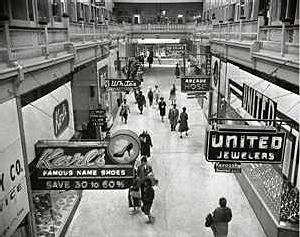
1950's
The Arcade
Between 4th and 5th Avenues

1950's
Cain-Sloan
Church Street
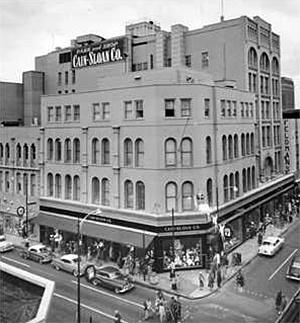
1950's
Cain-Sloan
Church and Fifth
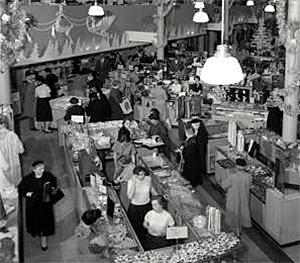
1950's
Castner-Knott
Busy Shoppers
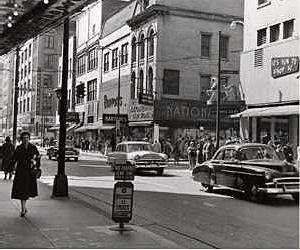
1955
Church Street
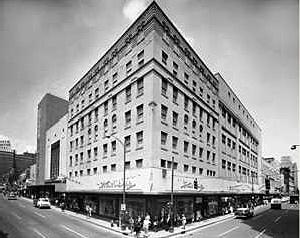
1950's
Harvey's
Church and Sixth
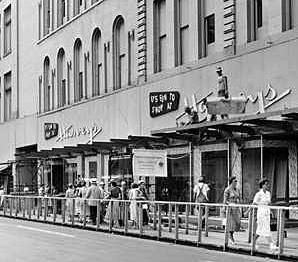
1950's
Harvey's
On Church Street
Union Station
The opening of Union Station in 1900 bolstered Nashville as a center for distribution and fueled the growth of the downtown area. It took approximately two years to build the Louisville and Nashville (L&N) Railroad station with its marble floors, 65-foot barrel-vaulted ceiling, and 128 stained glass panels. In its prime, Union Station welcomed thousands of passengers each day, but after more than seven decades of service, the station was condemned and closed. Fortunately, in 1985, Metropolitan Nashville officials acquired the structure, and Union Station was restored as a hotel and restaurant by the following year.
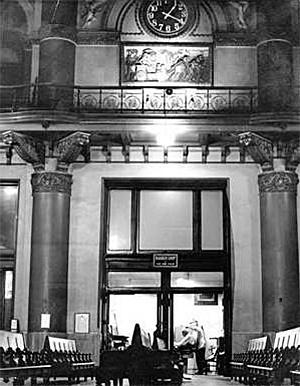
1950's
Barber Shop
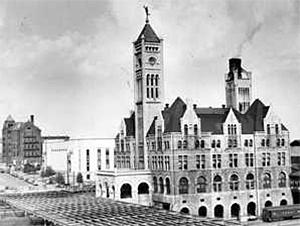
1955
Broadway Bridge Construction
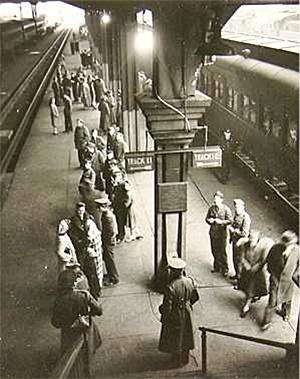
1943
GI's On The Platform
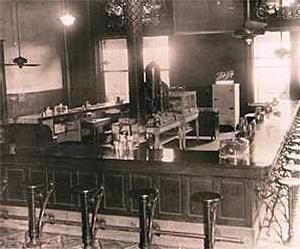
1936
Restaurant
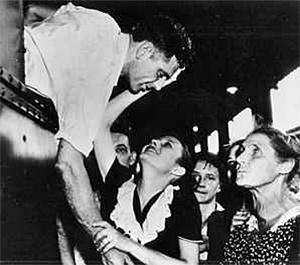
1943
Train Send Off

1935
Gift Shop
Production Credits
Producer/Writer/Director
Bridget Kling
Justin Harvey
Associate Producer
Editor
Ed Jones
Mike King
Videographer
Beth Curley
Executive Producer
